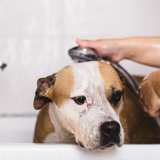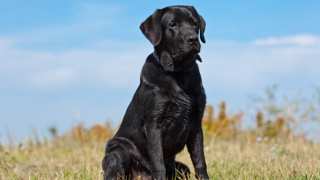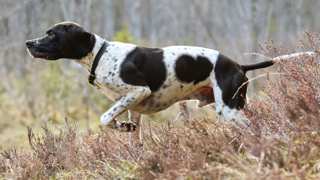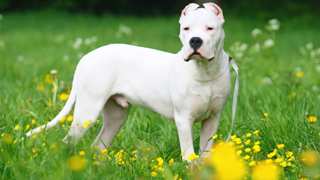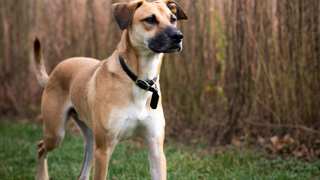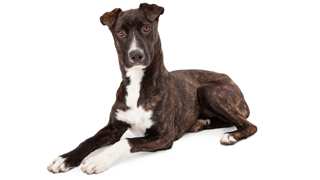The American Pit Bull Terrier is a dog that needs at least a moderate amount of significant exercise. Long daily walks are good, but they are just one part of the essential daily activity required to keep these dogs from becoming bored and obese. Also, if you want a visibly muscled Pitbull, you will need to invest in a fair amount of equipment and time as well as a proper diet devoid of recreational steroids. These dogs need a base routine of two daily walks of at least an hour. During these walks, it is very important to walk them properly, i.e., with you in complete control. Letting these dogs lead you, mark their territory as they please or try to chase after other animals will result in them thinking they are the pack leader. Obedience training and walking should be taught soon thereafter.
There are some things to avoid regarding Pitbull exercise, as these can either allow for injury later in life or cause problems due to dominance issues. Light exercise such as play should start around four months of age. For people who want muscular Pitbulls, heavy exercise should not start until the APBT is about a year old. As puppies, too much tug-of-war with ropes and similar activities can make for difficulties in training and control. Also, recreational steroids should absolutely be avoided. There may be the temptation to do this to bulk up your Pit Bully, but it is dangerous. Of course, Pit Bulls must be restrained at all times, whether inside a fence or home, or on a strong leash.
Pitbull exercise needs are not numerous, but boredom from inadequate exercise can happen. Walking is not enough Pitbull dog exercise, and play and mental stimulation is required. If your APBT starts chewing on shoes, furniture, and other things, this is a sign of inadequate exercise. If they are anxious, unusually aggressive or behaving unnaturally, these are also possible signs of too little exercise and too much pent-up energy.
Here are some recommended exercises for the breed:
- Walking: At least 30 minutes twice daily, briskly, and with you in complete control
- Conditioning: This is good for a fit APBT, and it is essential to keep them happy as well as under control
- Bonding activity: Playing together and mutual exercise such as running, hiking and biking will do this
- Toys: Agiility puzzles are very good, and they should be rotated to prevent boredom
- Weights: If you want a Pitbull with muscle, you should start with a harness. Sleds, cinder blocks or improvised weights can be used, or you can invest in a full regime of Pitbull exercise equipment
Making sure your Pit Bull gets some exercise when you aren't home is not too difficult. Leave out a couple of his agility toys is an easy one. If you have two or more APBTs, this will do wonders for their health and happiness. If it's to be a long time, you might want to either have an experienced house-sitter or lodge him with an experienced Pitbull trainer or place.
You'll want to make sure your Pitbull looks forward to exercise, but you'l also want to be the alpha. Set the tone before exiting the house by controlling the door. Have treats on hand, and make sure the dog knows that they are given only when an activity is properly completed. Set a time and perform activities that exclusively signal that day's exercise time. Meal time for muscle-building after the activity will help control your Pitbull until the entire exercise engagement is over.
